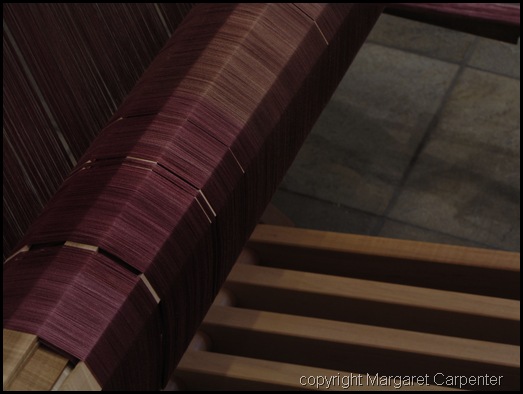Posted by Peg in South Carolina
There is a saying that when the student is ready, the teacher will appear. The teacher for me has taken the form of a book. The War of Art by Steven Pressfield. There is a subtitle, but I hate it.
ABOUT TO HIT THE WALL
I started reading the book this morning. I have been reading the first part: “Resistance: Defining the Enemy.” All at once, my mind started working. The timing of my back issues. Yes, it gets me attention. Do I need attention? But the timing, it all started getting serious as I was getting into some really hard stuff in terms of crackle design. I was getting ready to hit a wall. I could see it. I could actually feel the wall getting closer and closer.
The wall spelled the end of the easy stuff in the Crackle-Draft-A-Day Project. The end, actually, of actually being able to come up with a draft a day. The beginning of the need to take time to think. Not just play around with easy possibilities. Those easy possibilities were vanishing quickly. I was going to have to start to think.
Why did carpal tunnel syndrome suddenly start? Because I was using the weaving software way too much. Is there a message there? I think so. I was using the software as a substitute of doing the hard work of thinking and imagining. Using the weaving software, as I was, was largely a technique of avoidance, of resistance. The devil at work. And so I was punished with carpal tunnel.
FACING THE RESISTANCE
I have something hard to face right now. I can’t weave. I can’t even thread the loom, because of my back issues. That doesn’t mean I can’t confront the resistance. That doesn’t mean that my mind needs to stop working.
Pressfield asks:
What does Resistance feel like?
First, unhappiness. We feel like hell. A low-grade misery pervades everything. We’re bored, we’re restless. We can’t get no satisfaction. There’s guilt but we can’t put our finger on the source…….We hate our lives. We hate ourselves. (page. 31)
So then, he goes on, we want a drug, we want to go shopping, we want to surf the net endlessly. Anything to escape.
Not a pretty picture.
But, instead of moping and feeling sorry for myself (and spending half my time on Amazon.com……..), I could actually work.
When I have encountered resistance in the past, I have used a technique that worked for me. I would figure out one very small thing that I could do. It might take only 5 minutes, or even less. And then I would make an appointment with myself—day and time. Of course, now I am resisting doing that!
SINGING AS PART OF THE RESISTANCE?
The strange thing is that I have not encountered this resistance in my singing. I continue to practice 1 1/2 hours to 2 hours a day. I continue to make progress. I continue to work very hard. I have said to myself, at least my body allows me to do this. And so, that makes it OK not to be engaged in weaving-related activities.
But think about it. Where I am at vocally is very much of a beginner. Not so with weaving. Resistance rarely makes itself felt for me at the beginning levels. It only starts to manifest itself as I progress onto levels which require hard work, really hard work, original hard work.
I have turned my singing into a resistance to keep me from weaving!
Gosh, if there is anything I am good at, it is playing tricks on myself.
It is time to stop writing about this. It is time to kick butt and move on.
Related Posts:
Resistance and Finding Time
Resistance
"Resistance to Doing the Work” was written by Margaret Carpenter for Talking about Weaving and was originally posted on March 30, 2010. ©2010 Margaret Carpenter aka Peg in South Carolina



















